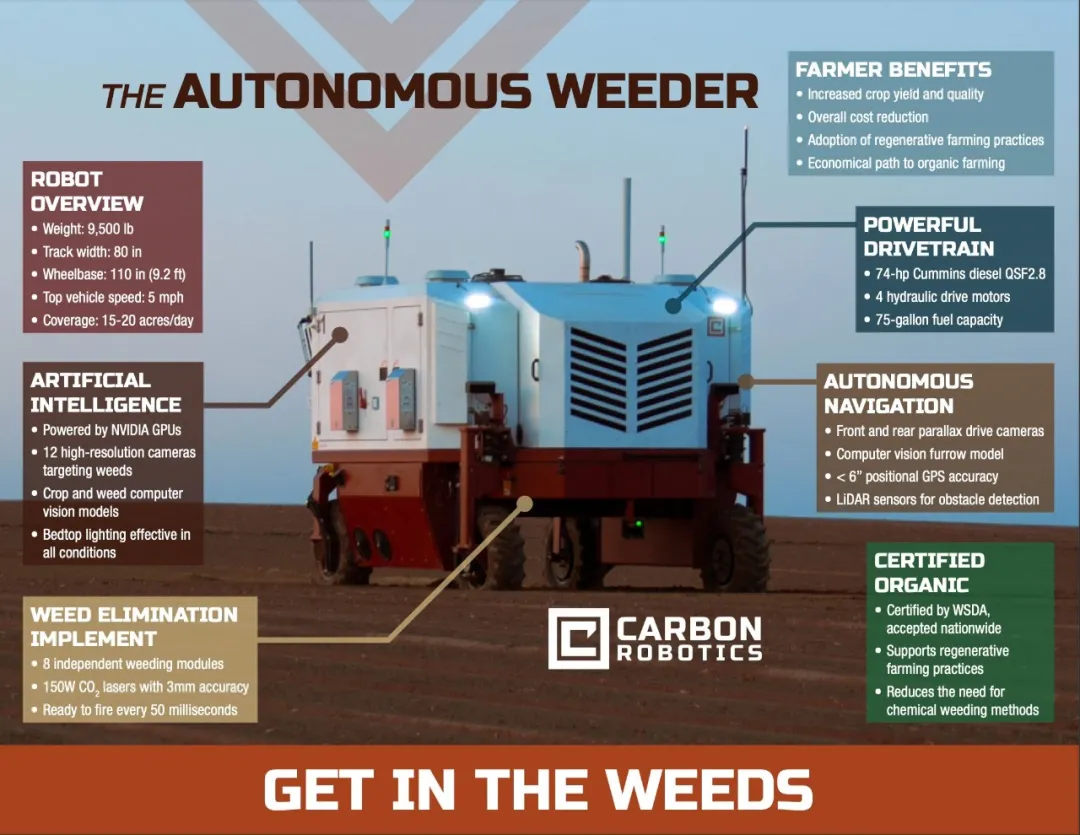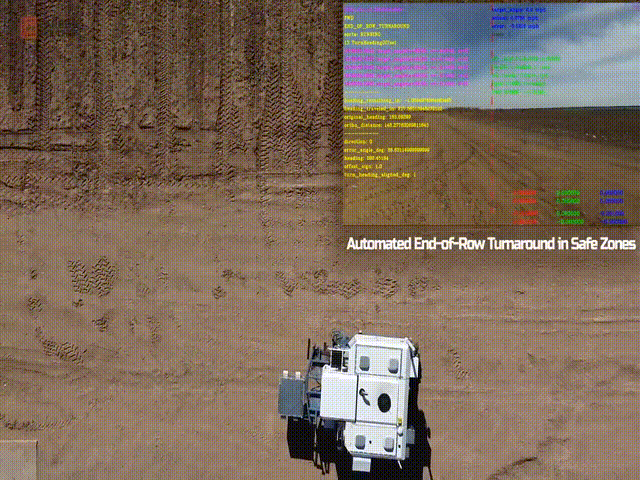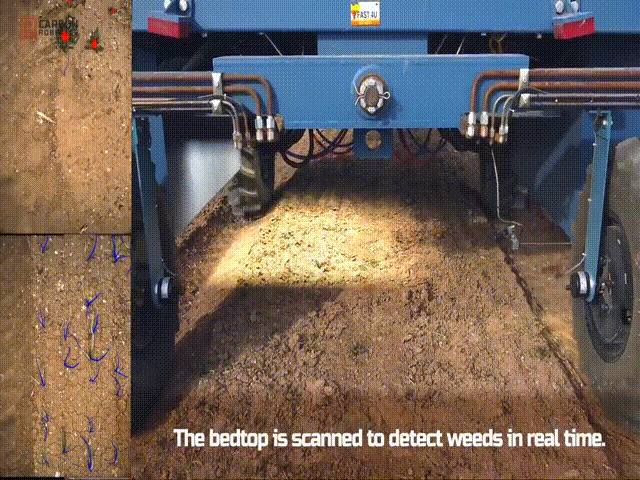Command Palette
Search for a command to run...
Farmers Use Fully Automatic Weeding Machines to Weed 100,000 Plants Per Hour
On a private farm in Ohio, USA, Shay Myers owns 30 acres (about 120 mu) of onion planting land. Three generations of his family have been engaged in agricultural production and have witnessed nearly a hundred years of development of agricultural mechanization in the United States.

This year, Shay Myers used two 3-meter-long, 4-ton machines to weed his farm.
He chose the Autonomous Weeder produced by the American intelligent machinery company Carbon Robotic, which uses artificial intelligence and lasers to weed.
100,000 weeds can be removed per hour
Carbon Robotics’ autonomous weeder uses automated mechanics, artificial intelligence, and laser technology to enable the machine to safely and efficiently navigate farm fields to identify, target, and remove weeds.

Unlike other weeding technologies, the robot uses high-powered lasers to remove weeds through heat energy without damaging crops and soil. Automated weeders allow farmers to reduce the use of highly harmful herbicides and save more labor.
Autonomous Weeder has 75 hp engine, four-wheel drive, 280-liter fuel tank, NVIDIA graphics card, front and rear cameras, LiDAR obstacle sensor and laser module, can be completed independentlyNavigation, scanning, laser weedingThis set of processes.
navigation
The company's official website emphasizes that the automatic weeder can identify the scope of farmland and ridges in the field based on GPS and machine vision, and accurately navigate the work route.

Currently, the machine is more suitable for comprehensive automated weeding on large farmlands of more than 200 acres (1,200 mu).
scanning
When the weeder passes over the furrow,Twelve high-resolution cameras mounted on the bottom of the vehicle detect the heat energy in the weed meristem., to mark which are crops and which are weeds.

Over the past two years, the development team has worked with farmers around the world and, after testing, has found the best identification and weed control results for crops such as onions and broccoli.
Laser weed control
After the Autonomous Weeder identifies the weeds, the dot matrix carbon dioxide laser module under the vehicle has an accuracy control within 3mm and can perform laser weeding on 8 targets at the same time.

After Carbon Robotics launched the Autonomous Weeder, it received intention orders and joint experiments from more than a dozen large farms in the United States.
Just last month, the company completed a $27 million Series B financing.And all 2021 and 2022 production capacity of the Autonomous Weeder has been sold out, with pre-orders exceeding $20 million.
AI Weed Killer vs. Traditional Weed Killers
According to statistics, there are more than 200 types of herbicides approved for use by agricultural departments around the world.
Weeds are also becoming more resistant to pesticides, and farmers are increasing the amount and frequency of herbicide applications, from 3-4 times a year to 5-6 times a year, which has become a common phenomenon.Incomplete statistics from my country alone show that the amount of herbicides used is as high as 100,000 tons per year..
The use of herbicides has indeed brought convenience to agricultural production.But at the same time, it has also caused serious and irreversible pollution to farmland, forest land, local water sources and the atmospheric environment.
Herbicides also pose a huge threat to the safety of crops, and there are calls around the world to stop the abuse of herbicides and promote the consumption of organic agricultural products.
Although the Autonomous Weeder and other similar agricultural machines are still in the development stage, they may not be suitable for farmland other than large farms, and their costs have yet to be calculated.
However, as the market controls the use of herbicides and pursues a healthy diet, the whole society will invest more R&D resources and more cutting-edge technologies to continue to promote the development of agricultural AI and help develop agricultural technology in a more sustainable and humane way.








